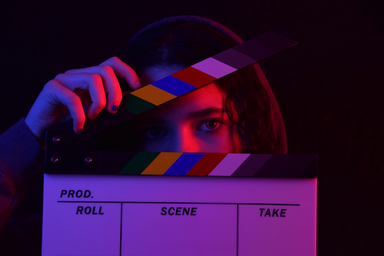For a long time, at the beginning of the cinema, the screens were filled only with black and white. So, when they created equipment capable of shooting in color, this technology revolutionized the world’s seventh art. From there, the filmmakers began to think about the importance of colors present in movies, as they are necessary not only for an aesthetic, but also to help build the film’s narrative, in addition to giving a unique tone to the feature film.
But how can the colors on the screen help the movie’s narrative? When colors entered the cinema, filmmakers began to think about how to use colors to complement and implement the narrative. Thus, they started to use Color Psychology.
- Color Psychology in the cinema
-
The psychology of colors explains how the human being behaves in the face of certain colors. This area of psychology studies the effects that each color has on human behavior. Different colors convey different sensations to the viewer. Subtly, they influence our mood and behavior, without us even realizing it.
With this study, filmmakers learn what color can do to the viewer and use that theory to accentuate emotions and sensations, represent emotions and character attributes, and influence the understanding of the story. Colors are thought of as an important element of the movie.
- Colors combinations and movie palettes
-
The colors are divided into three groups: warm, cool, and neutral colors. The cool colors are green, blue, purple, and turquoise, which refers to sadness, melancholy, loneliness, tranquility, peace, mysticism, depression, among other feelings and sensations. Red, yellow, orange, and pink are warm colors, which convey warmth, passion, desire, romance, love, violence, death, madness, joy, and excitement. The neutral colors, black, white, and gray, are generally used to highlight the other colors of the movie’s palette.
Knowing this, filmmakers use different color combinations to create color palettes for their stories and characters. From the chromatic scale of colors, they generate different types of color palettes. It can be monochromatic when a single color is used with different brightness and saturation. It can also be composed of complementary, analogous, and triadic colors, depending on the chromatic scale.
- Types of color palettes
-
A monochromatic color palette gives a tone to the film, as in Matrix, which has a color palette with shades of green, giving an unnatural and unhealthy aspect to the film. The palettes with complementary colors, on the other hand, are associated with conflicts and make the two opposite colors on the chromatic scale stand out in the frame of the movie. Blue and orange are widely used in Hollywood movies, in which the actors are presented in warm orange tones and the background is blue, to highlight the actor in the scene.
Now, palettes with analogous colors use three colors that are close in the color circle, seeking to please the viewers’ eyes and create harmony in the movie. And the triadic color scheme uses three colors with equal separations on the chromatic scale to create vibrant, happy, and relaxed scenes. This color scheme is generally used for children’s movies, such as cartoons.
Filmmakers can also choose to use only one color in the film, to highlight important objects and elements, as the director of Schindler’s List used the red of the girl’s coat to highlight her character.
Also, the choice of a color palette for a movie can already tell us what the movie will talk about, whether the story is a romance, suspense, or terror. Colors can show changes in time. The fact is that the use of colorful tones – or the absence of it – in a movie can indicate a narrative style, or they can indicate the director of the film, who has a certain style of color palettes in his or her productions.
——————————————————
The article above was edited by Isadora Noronha Pereira.
Liked this type of content? Check Her Campus Casper Libero’s home page for more!


